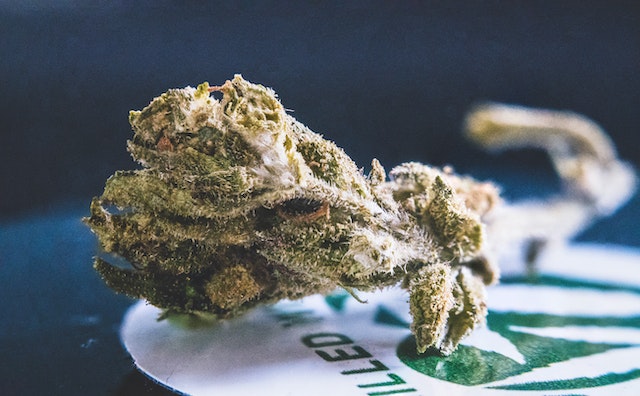Since ancient times, cannabis has been used both medically and recreationally. It’s no secret that this plant includes a complex blend of chemical substances, like terpenes, flavonoids, and cannabinoids, which are renowned for their distinctive effects. Tetrahydrocannabiphorol, or THCP, is a newly discovered cannabinoid that has drawn interest from scientists and cannabis enthusiasts.
The most notable cannabinoid in marijuana, THC, has been viewed as less strong than Tetrahydrocannabiphorol. The local marijuana area is exceptionally excited about its revelation since it opens up additional opportunities for involving cannabis for therapeutic purposes.
This blog post will discuss what THCP is, how it contrasts with THC, its advantages and dangers, and all the other things you want to know about this fascinating compound.
1. Discovery:
An important turning point in the study of cannabis was Italian researchers’ discovery of THCP in 2019. THC was formerly believed to be the most potent psychoactive substance present in cannabis until this discovery. Tetrahydrocannabiphorol is thought to be up to 30 times more potent than THC.
Identification of Tetrahydrocannabiphorol also emphasizes the significance of continuing study into cannabis and its chemical composition because more chemicals may still be hiding in plain sight.
The finding of THCP has created new opportunities for an investigation into the possible therapeutic uses of cannabis and the creation of novel cannabis-based products. As more study is conducted on Tetrahydrocannabiphorol, it might be feasible to have a greater understanding of what is THCP, how it affects the body, its potential hazards, and its advantages.
2. Effects:
The potential effects of THCP on the body are crucial to know about. We’ve mentioned some significant impacts below:
Psychoactive impacts:
It is believed that THCP has more powerful psychoactive effects than THC. It can influence feeling, insight, and mental capabilities all the more emphatically. The impacts of Tetrahydrocannabiphorol might be more pronounced happiness, changed insight, and relaxation.
Pain relief:
The results of preliminary research point to THCP’s potential as a painkiller. It is said to possess potent anti-inflammatory qualities, which can assist in reducing pain brought on by ailments like neuropathic pain, migraines, and arthritis.
Anti-inflammatory properties:
Strong anti-inflammatory qualities of THCP have been demonstrated, making it a possible treatment for various inflammatory diseases and illnesses, including Crohn’s disease, multiple sclerosis, and rheumatoid arthritis.
Potential for anxiety:
Due to its strength, THCP may have the potential to make certain users anxious. It might be particularly relevant for people more susceptible to cannabis effects or who take higher amounts of Tetrahydrocannabiphorol.
Other potential effects:
While there is still much to learn about Tetrahydrocannabiphorol, preliminary research suggests it may also have other effects, including reducing nausea and vomiting, enhancing sleep, and boosting appetite.
3. Legal Status:
THCP and its products are now lawful in the United States at the federal level, though this may change depending on the nation and jurisdiction. This is due to the 2018 Farm Bill, which legalized cannabis and all hemp-derived cannabinoids and products, including Tetrahydrocannabiphorol, as long as they had less than 0.3% THC by weight.
It’s important to remember that state regulations on THCP and other cannabinoids may differ. Cannabis and its derivatives are governed by regulations that vary from state to state, some of which are stricter than others. Understanding the legality of Tetrahydrocannabiphorol and its products requires studying the legislation in your particular state or area.
Furthermore, despite being legal at the federal level, THCP should still be used carefully and in compliance with the law since it is still a prohibited narcotic. Before using Tetrahydrocannabiphorol, like with any cannabinoid or cannabis-derived medicine, you should speak with a healthcare provider, especially if you are expecting, nursing, or have any current medical issues.
4. Extraction:
THCP can be extricated from weed plants utilizing different techniques.
- The most well-known technique for extraction is chromatography, which isolates the different mixtures in the cannabis plant by going through several filters. The channels can isolate the THCP from other cannabinoids, terpenes, and flavonoids, coming about in a profoundly thought Tetrahydrocannabiphorol removal.
- Utilizing solvents like ethanol, butane, or CO2 to separate the Tetrahydrocannabiphorol from the plant material is another way to extract THCP. In this method, the cannabis plant is submerged in the solvent, which dissolves the THCP and other plant-based chemicals. A concentrated THCP extract is then produced after the solvent disappears.
While THCP extraction is relatively new and still being studied, it is important to note that the process should be done cautiously and under proper laboratory conditions to ensure the safety and purity of the final product. Improper extraction methods or impure Tetrahydrocannabiphorol extracts could pose health risks to consumers.
5. Potential For Cannabis Breeding:
Cannabis breeders have long been interested in selectively breeding cannabis strains to produce higher levels of THC and other cannabinoids like CBD (cannabidiol). With the discovery of THCP, breeders are now exploring the potential of selectively breeding cannabis strains to produce higher levels of Tetrahydrocannabiphorol.
Breeding for higher levels of THCP could have several potential benefits, such as:
- It could produce cannabis strains with stronger pain relief properties, anti-seizure, and other conditions or discomforts
- It could allow for more precise dosing of cannabis products, as higher levels of THCP would require smaller amounts of cannabis to achieve the desired effects.
- It could help to diversify the cannabis market, offering consumers more choices in terms of the specific effects they are looking for.
However, reproducing for more significant levels of THCP can be challenging. THCP is a somewhat newfound compound, and there is still much that is obscure about its properties and possible consequences for the body.
Furthermore, reproducing for elevated levels of Tetrahydrocannabiphorol might require a critical venture of time and assets as raisers should cautiously choose and cross-breed marijuana strains to accomplish the ideal outcomes.
Conclusion:
THCP is a newfound cannabinoid that can change the weed business. Its chemical structure is like that of THC. Yet, it is considered considerably more potent, with a limiting proclivity to CB1 receptors. Tetrahydrocannabiphorol might make more grounded psychoactive impacts and therapeutic advantages, albeit more exploration is expected to comprehend its properties completely.
While Tetrahydrocannabiphorol is, as of now, found in extremely low levels in weed plants, the revelation of its presence has opened up additional opportunities for the advancement of new strains and items with higher THCP content.
Nonetheless, as with any new cannabinoid, it is vital to move toward Tetrahydrocannabiphorol with vigilance since further examination will decide its well-being and adequacy.










